
The United Mine Workers of America is a North American labor union best known for representing coal miners. Today, the Union also represents health care workers, truck drivers, manufacturing workers and public employees in the United States and Canada. Although its main focus has always been on workers and their rights, the UMW of today also advocates for better roads, schools, and universal health care. By 2014, coal mining had largely shifted to open pit mines in Wyoming, and there were only 60,000 active coal miners. The UMW was left with 35,000 members, of whom 20,000 were coal miners, chiefly in underground mines in Kentucky and West Virginia. However it was responsible for pensions and medical benefits for 40,000 retired miners, and for 50,000 spouses and dependents.

The Federal Triangle is a triangular area in Washington, D.C. formed by 15th Street NW, Constitution Avenue NW, Pennsylvania Avenue NW, and E Street NW. Federal Triangle is occupied by 10 large city and federal office buildings, all of which are part of the Pennsylvania Avenue National Historic Site. Seven of the buildings in Federal Triangle were built by the U.S. federal government in the early and mid-1930s as part of a coordinated construction plan that has been called "one of the greatest building projects ever undertaken" and all seven buildings are now designated as architecturally historic. The Federal Triangle Washington Metro station serves Federal Triangle and the surrounding area.
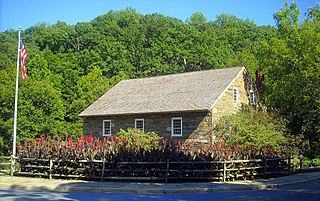
This is a list of properties and districts in Washington, D.C., on the National Register of Historic Places. There are more than 600 listings, including 74 National Historic Landmarks of the United States and another 13 places otherwise designated as historic sites of national importance by Congress or the President.

The Carling, formerly known as the Carling Hotel and Hotel Roosevelt, is a historic building in Jacksonville, Florida, United States built in 1925. It is located at 31 West Adams Street in Downtown Jacksonville. As its former names indicates it was originally a hotel, and was used for that purpose until 1964; it currently serves as a residential building.

The Lee–Fendall House is a historic house museum and garden located in Old Town Alexandria, Virginia at 614 Oronoco Street. Since its construction in 1785 the house has served as home to thirty-seven members of the Lee family (1785–1903), hundreds of convalescing Union soldiers (1863–1865), the prominent Downham family (1903–1937), the family of powerful labor leader John L. Lewis (1937–1969), and enslaved or free servants of those families.

The American Federation of Labor Building is a seven-story brick and limestone building located along Massachusetts Avenue in Washington, D.C. Completed in 1916, it served as the headquarters of the American Federation of Labor until 1955, when it merged with the Congress of Industrial Organizations to form the AFL–CIO. It remained a trade union headquarters until 2005, when it was sold to the developers of the Washington Marriott Marquis hotel. The building exterior, the only historical element remaining of the building, is now part of that structure. It was declared a National Historic Landmark in 1974. It housed the American Federation of Labor for 40 years.

The Administration Building, Carnegie Institute of Washington is a Beaux-Arts style building designed by architects Carrere and Hastings, and located at 1530 P Street NW in Washington, D.C. It houses the Carnegie Institution for Science, a philanthropic scientific research organization founded in 1902 by Andrew Carnegie. In recognition of the building's architecture and its unique tenant, the building was declared a National Historic Landmark in 1965. The building was also designated a contributing property to the Sixteenth Street Historic District in 1978.
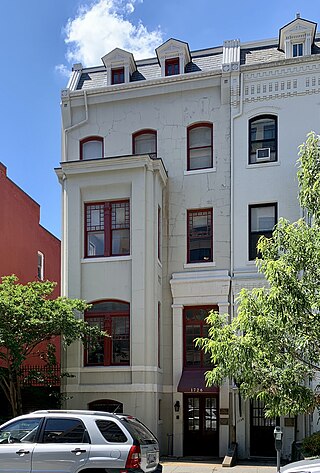
The Elliott Coues House is a historic house at 1726 N Street NW, in the Dupont Circle neighborhood of Washington, D.C. Built about 1880, it was the home of 19th-century historian and ornithologist Elliott Coues (1842–99) from about 1887 until his death. Coues helped found the American Ornithologists' Union in 1883 and edited about 15 volumes of journals, memoirs, and diaries by famous Western explorers and fur traders. The house was declared a National Historic Landmark in 1975.
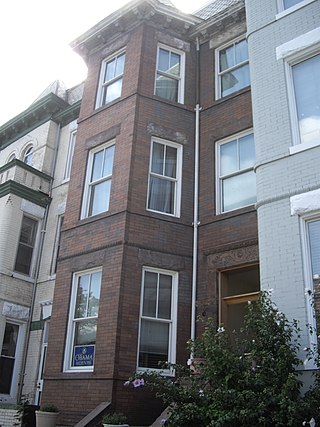
The Samuel Gompers House is a historic house at 2122 1st Street NW, in the Bloomingdale neighborhood of Washington, D.C. Built around the turn of the 20th century, it was from 1902 until 1917 home to Samuel Gompers (1850–1924), who was founder and president of the American Federation of Labor from 1886 until his death. It was declared a National Historic Landmark in 1974.
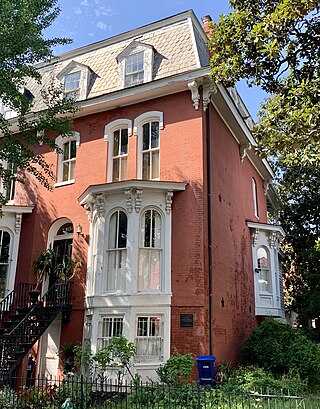
The Zalmon Richards House is a historic house in Washington, D.C. A Second Empire rowhouse, it was home from 1882 until his death of Zalmon Richards (1811–1899), founder of the National Education Association. It was declared a National Historic Landmark in 1965. It is a private residence.

Twelfth Street YMCA Building, also known as Anthony Bowen YMCA, was home to the first African American chapter of YMCA, founded in 1853 by Anthony Bowen. It is located at 1816 12th Street NW in the U Street Corridor (Cardozo/Shaw) neighborhood of Washington, D.C. The building was reopened on February 20, 2000 as the Thurgood Marshall Center in honor of the first African American Associate Justice to serve on the United States Supreme Court. The Thurgood Marshall Center now serves as a community center for residents of the U Street Corridor and Shaw neighborhoods. The permanent organization of Phi Beta Sigma fraternity was established in the Bowen Room.

Hamilton Hall is a National Historic Landmark at 9 Chestnut Street in Salem, Massachusetts. Designed by noted Salem builder Samuel McIntire and built in 1805–1807, it is an excellent instance of a public Federal style building. It was built as a social space for the leading families of Salem, and was named for Founding Father and Federalist Party leader Alexander Hamilton. It continues to function as a social hall today: it is used for events, private functions, weddings and is also home to a series of lectures that originated in 1944 by the Ladies Committee.

The Frank M. Johnson Jr. Federal Building and United States Courthouse is a United States federal building in Montgomery, Alabama, completed in 1933 and primarily used as a courthouse of the United States District Court for the Middle District of Alabama. The building is also known as United States Post Office and Courthouse—Montgomery and listed under that name on the National Register of Historic Places. In 1992, it was renamed by the United States Congress in honor of Frank Minis Johnson, who had served as both a district court judge and a court of appeals judge. It was designated a National Historic Landmark in 2015.

The U.S. General Services Administration Building is a historic office building and the headquarters of General Services Administration located at Washington, D.C. It was built originally to house offices of the United States Department of the Interior.

The Lafayette Building, also known as Export-Import Bank Building, is a federal government office building at 811 Vermont Avenue NW in Washington, D.C. Completed in 1940, it was declared a National Historic Landmark in 2005. Its landmark designation was made because it was home to the Reconstruction Finance Corporation, the government arm that financed and oversaw the mobilization of the United States economy during World War II. It is currently home to the Export–Import Bank of the United States and to offices of the United States Department of Veterans Affairs.

Union Hall is a historic meeting hall near the junction of Depot and Central Streets in Danforth, Maine. Built in 1890, the hall has served since then as a venue for private and public events, including town meetings and other municipal functions, and as a meeting point for fraternal organizations including the Masons and the Odd Fellows. It is a prominent landmark in the village center. The building was listed on the National Register of Historic Places in 1987.
The 1920 Alabama coal strike, or the Alabama miners' strike, was a statewide strike of the United Mine Workers of America against coal mine operators. The strike was marked by racial violence, and ended in significant defeat for the union and organized labor in Alabama.

The University Club of Albany, New York, was founded at the start of the 20th century. It is currently housed in a Colonial Revival brick building at the corner of Washington Avenue and Dove Street. In 2011 that building was listed on the National Register of Historic Places.
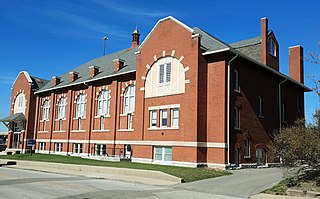
South Side Turnverein Hall is a historic social club and gymnasium in the Bates-Hendricks neighborhood of Indianapolis, Indiana, affiliated with the city's German-American community. It was built in 1900 by prominent architects Vonnegut & Bohn, whose managing partners Bernard Vonnegut, Sr. and Arthur Bohn were members of the burgeoning German-American community in Indianapolis. The architects were also known for designing the Athenæum, another German-American social club in the city. The South Side Turnverein was an important gathering place for Indianapolis' south side German community until its decline in the 1940s. It was sold to investors in 1978 to be used as an athletic club.

The Freedman's Bank Building, previously known as the Treasury Annex, is a historic office building located on the corner of Madison Place and Pennsylvania Avenue in Northwest Washington, D.C. in Washington, D.C. It sits on the east side of Lafayette Square, a public park on the north side of the White House, and across from the Treasury Building. The adjoining properties include the Howard T. Markey National Courts Building to the north and the former Riggs National Bank to the east.






















